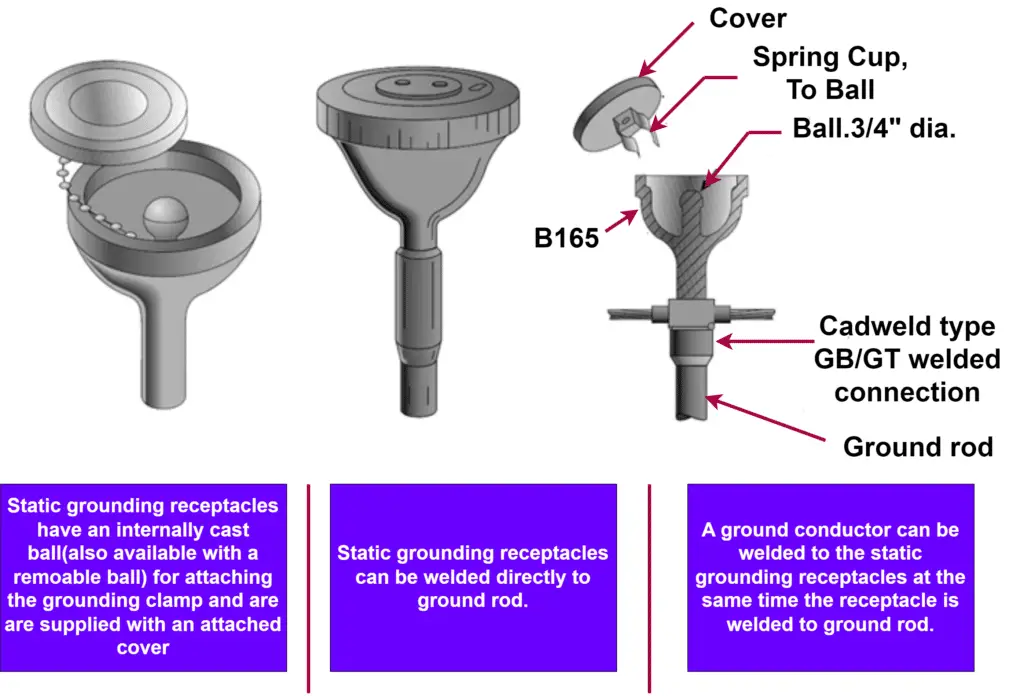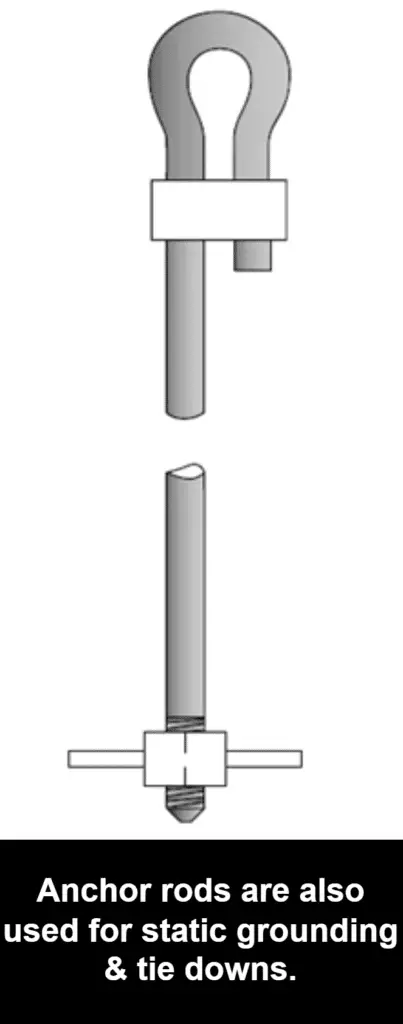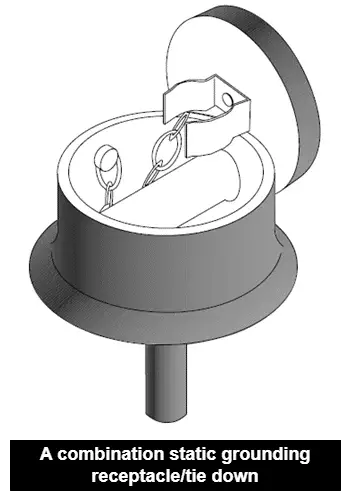The static grounding discharges the static charge build-up and protects the equipment from damage. Static electricity is the imbalance in electrical charge either positive or negative between any two objects. This charge is created by contact and separation (due to friction) of two dissimilar insulating surfaces. The static charge remains on the object until it either flows into the ground or loses its charge quickly by discharging.
Grounding
Grounding is a way to discharge the build-up static charge. Grounding is the safest way to discharge the build-up static charge. This is simply done by connecting an object to the earth with a grounding rod or electrode stuck in the ground. This method of grounding will drain the static charges away as they are produced. This is done by removing excess charge by transferring electrons between the object and the earth.
Static grounding is generally required at airports during aircraft fuelling.
Aircraft Fuelling
In an airport, the dispenser will supply the fuel by connecting the pressurized airport’s hydrant pit to the airplane’s fuel tank through a filter. Hence, there are a lot of static charges produced during the process of refueling.
At the airport, a huge mass of people is in close proximity to fuel. Also, the airports are usually on high ground, which makes them susceptible to lightning strikes. Static grounding is necessary whenever an airplane is refueled. Static grounding is normally achieved by positioning a properly installed static grounding receptacle on the tarmac near the area of refueling.

The static ground lead will be attached to the receptacle from both, the refueling vehicle and the aircraft before the fuel hoses are attached to the aircraft. The static grounding will equalize any potential difference between the two vehicles which will help prevent a static spark.
The static grounding receptacles are generally installed with the finished tarmac. The receptacle would be welded with either a ground rod or ground grid or both. Receptacles which screw onto a threaded or sectional rod are also available. But in these, the threaded connection can increase in resistance with time. The static grounding receptacles come with an internal cast ball for attaching the grounding clamp and are supplied with an attached cover.
The internal cast ball can be a removable ball also. These receptacles can be welded directly to a ground rod. A ground conductor may be welded to a static grounding directly receptacle and simultaneously the receptacle can be welded to a ground rod.


Lightning protection must be installed on the airport structures. Anchor rods are also available in the market for static grounding and tie-downs. The installation needs to bore a hole, insert the assembly, and then backfill the hole. Additionally, a large washer or steel plates with nuts are needed to secure the rod. Sometimes, a combination static grounding receptacle /tie down is used. This can be welded to a rod and/or a conductor.
Oil and Gas Industry
In the oil and gas industry, we need to minimize the chance of ignition from static electricity. In this industry, a static charge may result from contact and separation of flowing liquid through pipes, and in mixing, pouring, pumping, filtering, or agitating liquids. If there is a gas that contains liquid, water vapor or solid particles like rust particles or dirt may contribute to generating a static charge.
Generally, in the piping systems, the pipelines above the pipe rack have an earth plate welded with the pipe. A distribution earth plate is fitted with a pipe rack structure and the lines are bonded with earth cables. The entire system is connected to the ground.